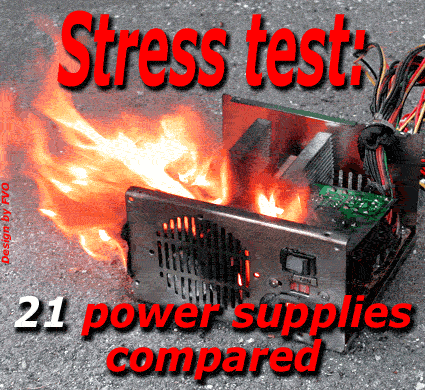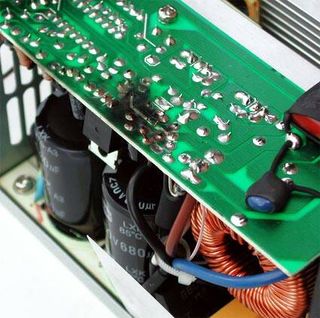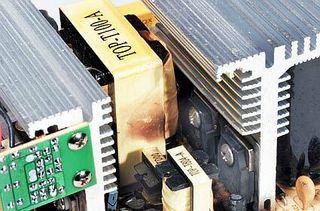Inadequate and Deceptive Product Labeling: Comparison of 21 Power Supplies
Full Load And Overload - Power Supply Units Pushed To The Limits

Symbolic representation only - Power supplies might not catch fire, but you can certainly burn them out.
THG continues to receive hundreds of e-mails regarding the causes of sudden and sometimes frequent "crashes" of users' computers and computer systems. As these computer crashes are random and unpredictable, users are losing important data and other critical information as a result. These issues of "stability" can cost hours of use time while the system is continued to be tinkered with in vain in an effort to resolve the issue. When this occurs, ambitious users are inclined to search for the cause in the processor settings, system memory or on the motherboard, since the Front Side Bus, CPU core voltage and GPU of the graphics card are often pushed to the limit to achieve maximum performance. This results in the user resetting all of the system parameters to default values - but to no avail. The computer continues to crash, eventually so frequently that it is no longer possible to continue using it.
One possible cause of unreliability that is often overlooked by users is the power supply that is installed in their computer. Unless the computer was custom built and the user recently had the power supply upgraded, chances are that it may contain a less-than-capable power supply. Users who stand to fare the worst are those who have purchased their computer from a computer super store and/or discount retailer. These systems are generally fitted with cheaply made, low-cost power supplies, which often can sustain damage even under minimal loads.
The power supply is something that many users overlook when they upgrade their PCs. Since upgraded components often require more power, a larger, more capable power supply should be a standard replacement when significant upgrades have been made to a computer. Only the lab test tells the truth - even if the maximum load is specified as 300 watts, the power supply often "gives up the ghost" long before reaching this load. Some manufacturers of power supplies apparently assume that computer users will never need maximum power from their power supply.

In the case of power supplies without an overload protection feature, the electronics get damaged when an excessively high load is run. Frequently, the switching regulator's capacitors explode.

Burnt-out coil in the Maxtron TOP-520P4.
We've covered this topic before in a rant , and have now decided to tackle this volatile subject with testing of 21 different, high-end power supplies in the THG lab in Munich, Germany. In spite of the high end-user retail prices, our lab technicians were surprised by the test results. No fewer than 6 power supplies struggled under full load: 3 of the candidates simply went up in smoke, while the other 3 shut down prematurely. The "black sheep" among all the test participants was Maxtron, with the TOP-520P4. According to the manufacturer's specifications, this power supply is represented to be capable of withstanding 520 watts - divided up over the corresponding voltage ranges. However, in our test, it ceased working at 446 watts. Completely dead!
Stay on the Cutting Edge
Join the experts who read Tom's Hardware for the inside track on enthusiast PC tech news — and have for over 25 years. We'll send breaking news and in-depth reviews of CPUs, GPUs, AI, maker hardware and more straight to your inbox.
Current page: Full Load And Overload - Power Supply Units Pushed To The Limits
Next Page Set Too High - Utopian Power Specifications